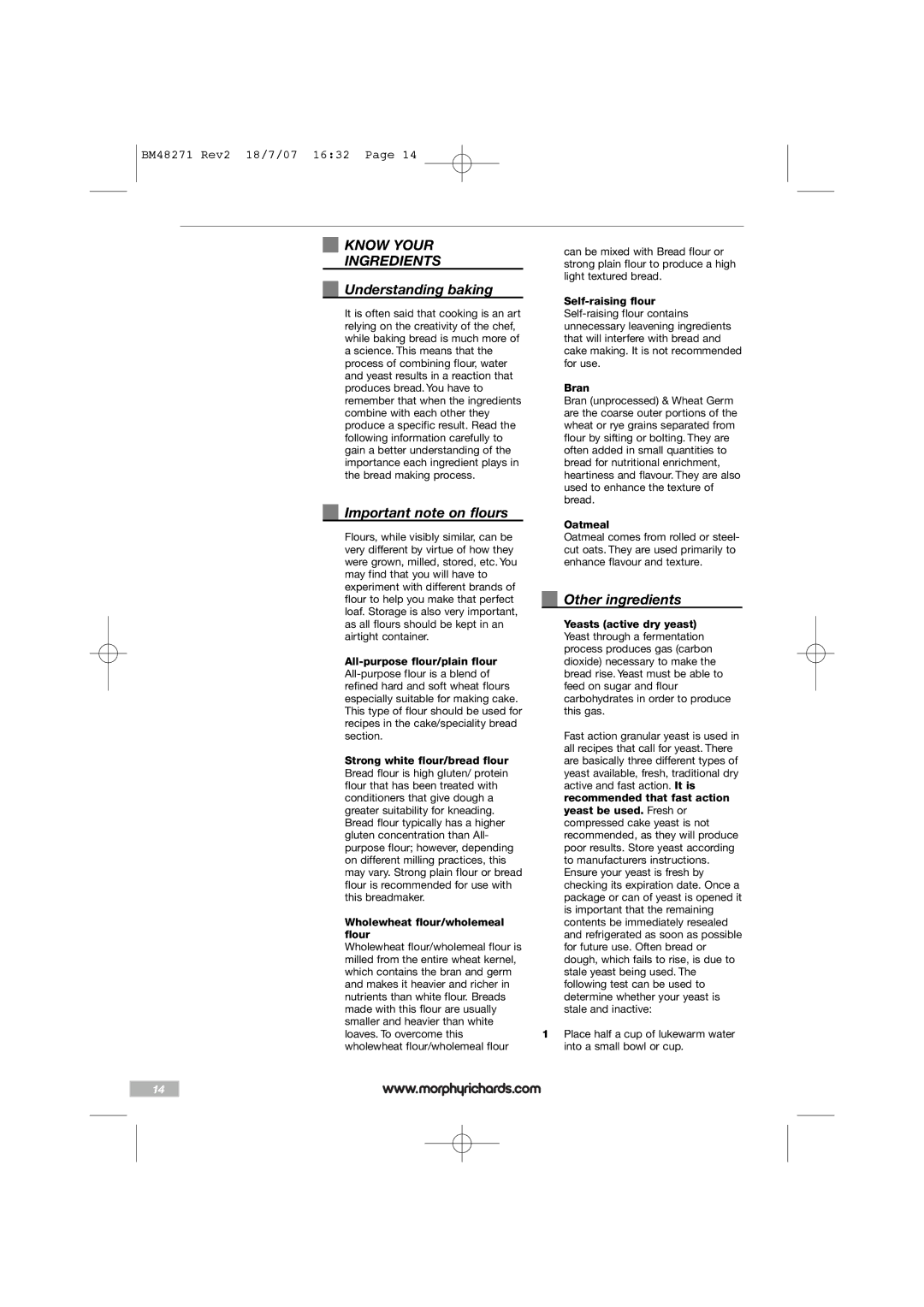BM48271 specifications
The Morphy Richards BM48271 is an innovative bread maker that combines modern technology with user-friendly features, making it an excellent choice for both novice and experienced bakers. This appliance is designed to simplify the bread-making process, ensuring that anyone can produce perfect loaves of bread with minimal effort.One of the standout features of the BM48271 is its versatility. It boasts multiple baking options, including a variety of bread types such as wholemeal, gluten-free, and French bread. Users can also experiment with different crust settings, from light to dark, allowing for a personalized baking experience. This flexibility makes it ideal for accommodating diverse tastes and dietary requirements.
The Morphy Richards BM48271 is equipped with a powerful baking capacity, capable of producing loaves up to 2 pounds in size. This is perfect for families or for those who enjoy entertaining guests. Additionally, the non-stick pan helps to ensure that loaves come out easily, reducing mess and making cleanup simple.
In terms of technology, the BM48271 features a programmable timer that allows you to set when your bread should begin baking. This means you can wake up to the delightful aroma of fresh bread or return home after a long day to find a warm loaf waiting for you. The 13-hour delay timer is particularly convenient for busy individuals and families who want fresh bread on their schedule.
The LCD display screen is user-friendly, making it easy to navigate through the various settings. The included measuring spoon and cup help ensure accurate ingredient measurements, contributing to consistently great results. The appliance also comes with a detailed recipe book that provides inspiration for creating delicious breads, helping users expand their baking repertoire.
Safety is another priority with the Morphy Richards BM48271. The appliance is designed with a cool-touch housing to prevent burns and a built-in power interruption feature that allows for a safe shutdown in case of emergencies.
Overall, the Morphy Richards BM48271 is a reliable and feature-rich bread maker that caters to the needs of bread enthusiasts. Its array of settings, user-friendly design, and safety features combine to deliver an exceptional baking experience. Whether you’re making daily sandwich bread, experimenting with specialty loaves, or simply enjoying the therapeutic process of baking, the Morphy Richards BM48271 stands out as a valuable addition to any kitchen.

